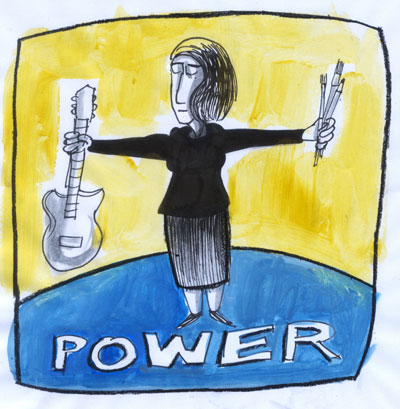 Every Saturday, we’ll be posting a new illustration by David Lester. The Mecca Normal guitarist is visually documenting people, places and events from his band’s 28-year run, with text by vocalist Jean Smith.
Every Saturday, we’ll be posting a new illustration by David Lester. The Mecca Normal guitarist is visually documenting people, places and events from his band’s 28-year run, with text by vocalist Jean Smith.
Nadine opened the door to Martin’s studio. A bank of floor-to-ceiling windows on the north end filled the room with muted light. Although she hadn’t formed a picture of his studio in her mind, there was nothing surprising about the room, its paint-splashed wood floors, skylights, several empty easels, the wall-to-wall storage rack filled with finished canvases and shelves loaded with large format … art books. She sat down on a stool and tipped her head to read their spines. Emil Nolde, Helen Frankenthaler, Milton Avery—all very loose and emotional colorists. Nolde was a splashy expressionist, whose vivid complementary pairings—typically orange and blue—dominated his landscapes, which were mostly sky. The abstract climates of Frankenthaler’s poured, blotted and dragged colors. Avery was marvelously confident in what looked like an outsider naïveté. Pierre Bonnard, Jean Dubuffet and a book about Peter Doig, a contemporary painter.
Next to the Doig, was Diebenkorn. An abstract expressionist whose aerial landscapes Nadine’s father had been very enthusiastic about. She pulled the large, soft-cover book off the shelf and flipped it open to the middle. She never really liked the chronology that art books favored. She understood the urge to start at the beginning, often on paper stock that wasn’t as expensive as the glossy that followed, where the early years were revealed, from the beginning, with illustrations of work done in uncomfortable imitative phases that many painters went through, phases that she preferred, as a casual viewer, to skip past. By the time painters had books published about them, they were often dead. Had they been alive, they would likely have objected to the invasion of their past, to find their earliest attempts plunked into the book’s beginning for anyone to invent history with.






